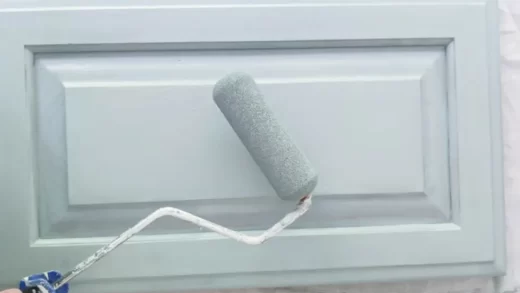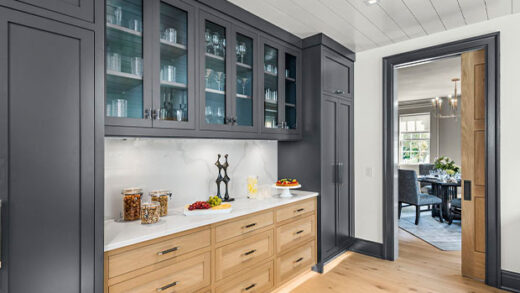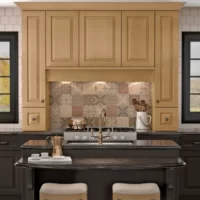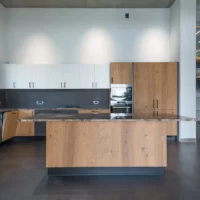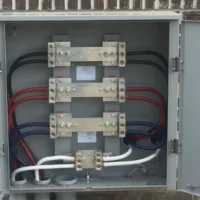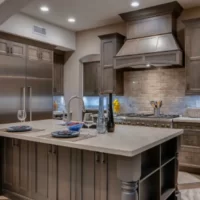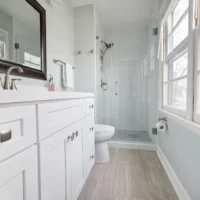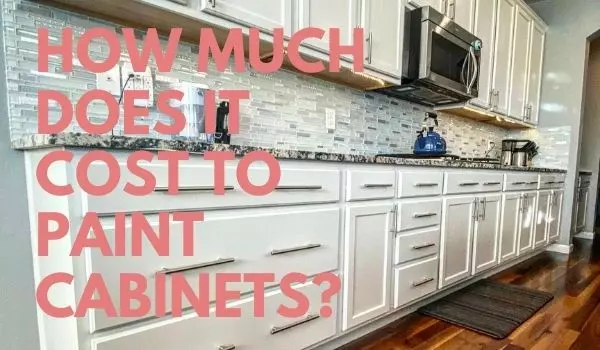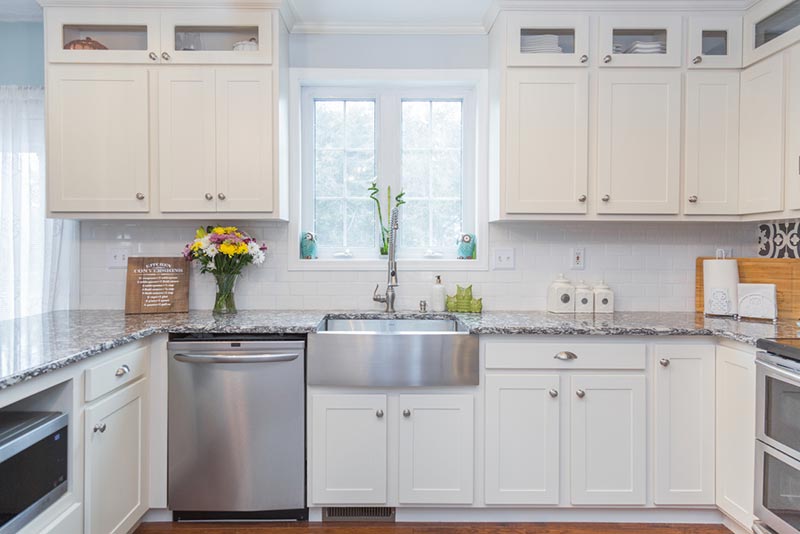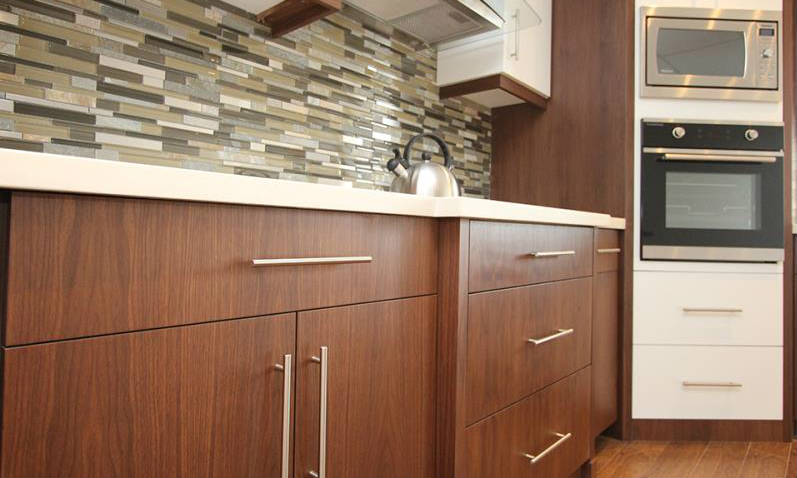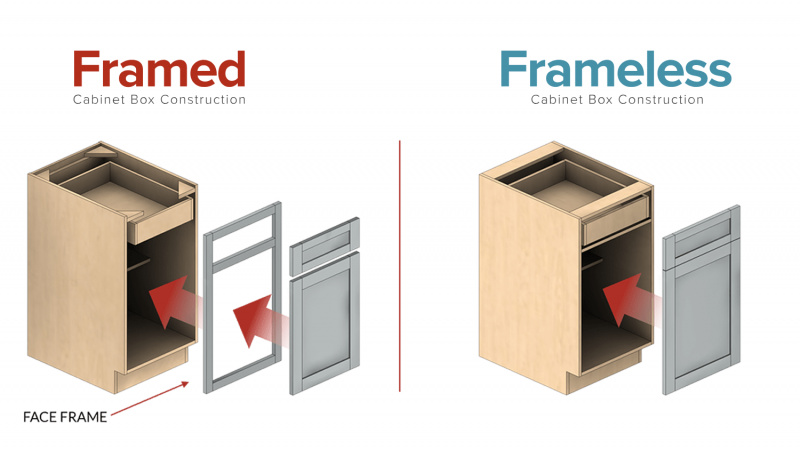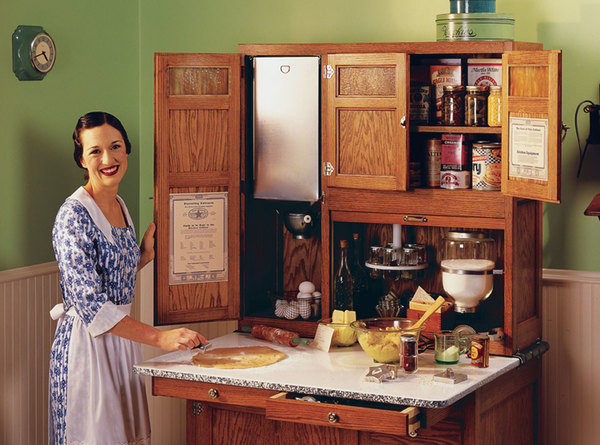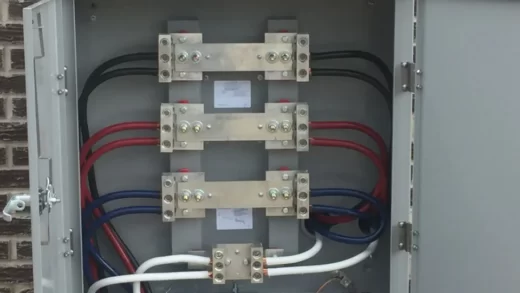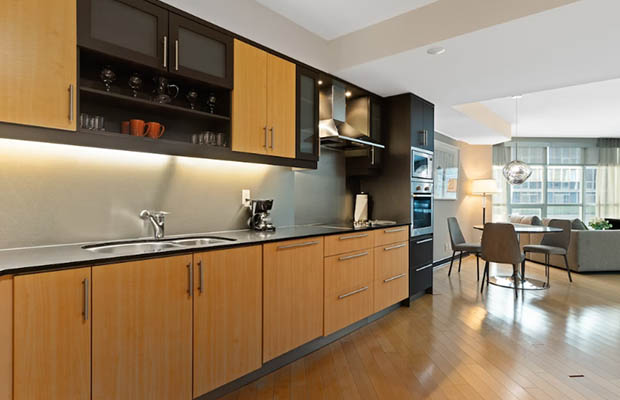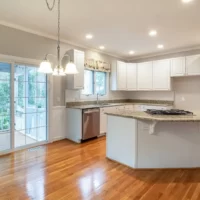When choosing cabinets, there are two types of construction to consider: framed cabinets or frameless cabinets. Both offer endless design possibilities and their own unique advantages. In reality, however, many people don’t even know the difference between framed and frameless cabinets. This article will show you the differences between framed and frameless cabinets.
Table of Contents
What Is a Frameless Cabinet?
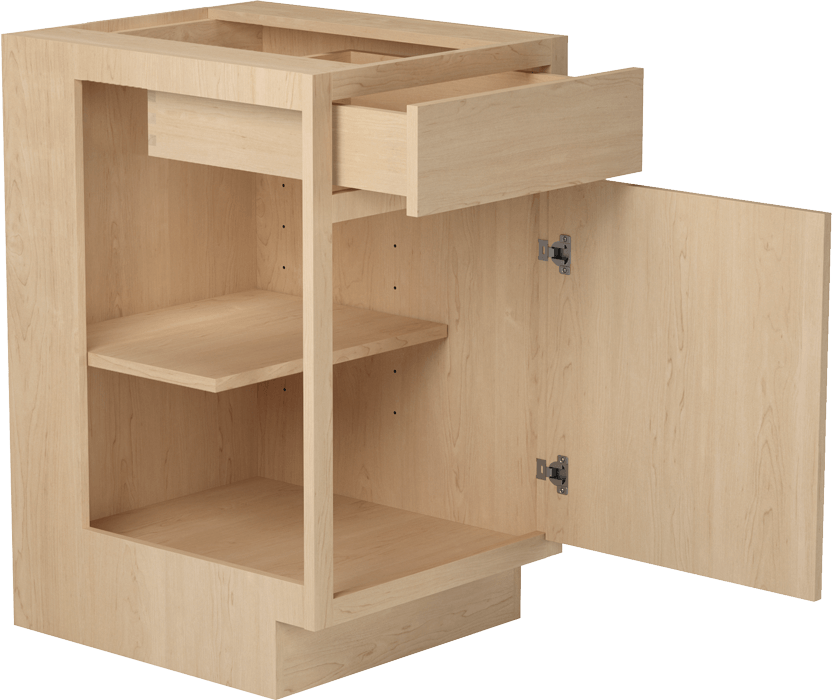
Frameless cabinets do not have face frames, instead, the door hinges are attached to the cabinet box itself, as shown in the photo above. Framed cabinets have a so-called “face-frame” in front of the cabinet. This face frame is usually about 1½ inches and extends around the cabinet opening. On framed cabinets, this is where the door hinges connect.
It sounds like a small change, but it makes a big difference. Having a frame will make the opening smaller. Instead, with frameless cabinets, you have full access to the entire space within
Does more access mean you have more storage space? All available space is now available for use. This makes the most noticeable difference in the drawers, where each drawer box is wider and deeper.
Not only are all your drawers bigger, but you can also fit bigger things through the door opening. Additionally, any accessories, such as rollout trays or wastebasket pullers, can also be larger. Everything can be moved from the cabinet side to the cabinet side and wasted space is kept to a minimum.
This equates to an additional 1½ inches of storage space per cabinet. Add that to the mix and an average of 5 cubic feet of extra storage space or an extra 24-inch-wide wall cabinet is required.
Benefits of Frameless Cabinetry
In frameless construction, the cabinet is not attached to the face frame at the front of the cabinet. Once installed, all you’ll see are the slab doors and drawer fronts, providing a sleek, simple aesthetic that works with many design themes throughout the home.
Frameless cabinets don’t have a middle ladder shelf between the two doors, allowing easier access to the contents and more storage space. Shelves are usually adjustable. Frameless cabinets also tend to have larger drawers because there is no front frame to save space.
- Larger drawers: The wider and deeper the drawer is.
- Reduce wasted space: The trays and accessories are pushed out to the full width of the cabinet.
- Larger Openings: This can accommodate wider items and make it easier to get in and out of cabinets.
- No Middle Ladder Shelf: When you open a two-door cabinet, there won’t be a rail going down the middle and dividing the space.
- Easier to remove and adjust the shelf: the face frame is out of the way, no need to rotate the shelf anymore until it goes through the opening.
- Easier loading and unloading of items: You can slide items in or out without getting caught by the edges created by the bottom frame.
- Easier to clean: You can wipe the inside without getting anything stuck to the frame.
Disadvantages of Framed Cabinet
- Due to the lack of a face frame, frameless cabinetry relies on the construction of the cabinet for support and stability.
- Typically fewer styles and material choices are available.
What Is a Framed Cabinet?
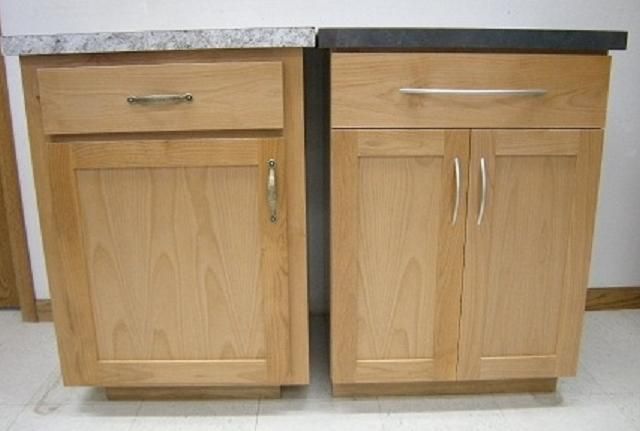
American cabinet makers have traditionally used frame construction to make cabinets. In this type of cabinet construction, the rails and stiles form a 1-1/2 inch face “frame” at the front of the cabinet. This frame resembles a flat picture frame attached to the front of the door, adding dimension to the front of the door.
Benefits of Framed Cabinet
In framed cabinets, the doors are fastened to the frame, which gives the cabinet strength and sturdiness. Framed cabinets attach door hinges to frame faces and shelves, and are usually adjustable, but not always. Partial and full coverage, as well as recessed doors, are available for framing cabinets, offering a multitude of design possibilities to create a custom look for your cabinets.
- Can be easier to install
- Available in a variety of materials including solid wood, MDF, particleboard, and laminate
- The frame should add strength and durability
Disadvantages of Framed Cabinet
- Slightly reduce storage space
- Difficult to customize after installation
- A separate skin panel needs to be installed to cover the seam on the exposed side
- Cabinets can be made of thinner materials
Conclusion: Which Is Right For You
Since the two cabinet styles are relatively similar, choosing the right cabinet for your kitchen may depend on your personal needs and design preferences.
If you want a more traditional look and don’t mind giving up some storage space, then framed cabinets may be a better option.
Frameless cabinets might make more sense if you want as much storage space as possible and have a more modern design in mind.

